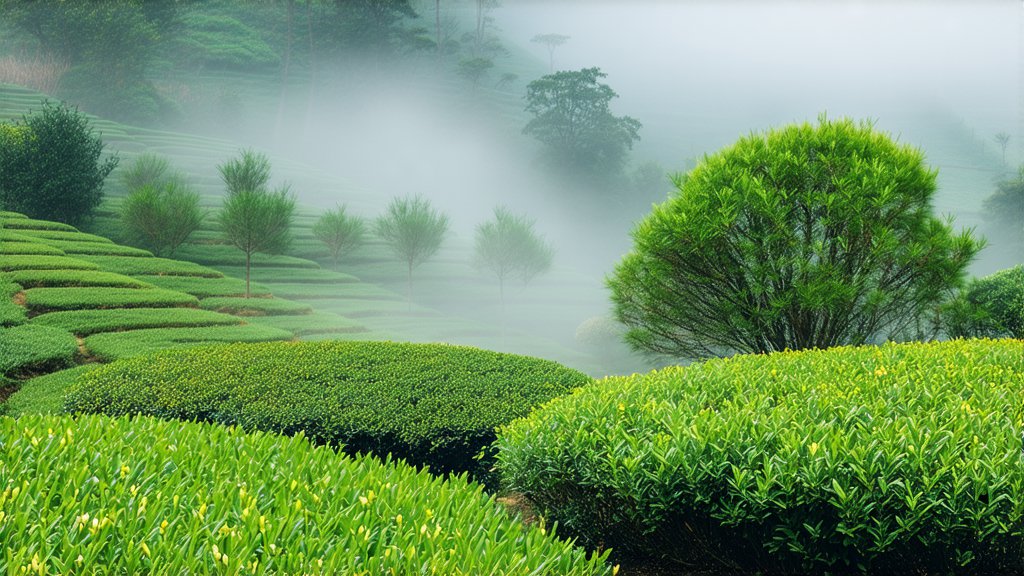
In the vast and diverse landscape of Chinese tea culture, where green, black, white, oolong, and pu-erh teas each tell their own unique story, there lies a hidden gem that often escapes the attention of even seasoned connoisseurs—Huoshan Yellow Buds. This enigmatic variety, nestled within the broader category of yellow teas, offers a glimpse into a world where tradition meets finesse, and nature's subtlety is celebrated through meticulous craftsmanship.
A Brief History
The origins of Huoshan Yellow Buds can be traced back to the Tang Dynasty (618-907 AD), a period marked by significant cultural and artistic flourishing in China. It is said that this tea was discovered accidentally when tea leaves failed to dry properly due to high humidity, leading to a unique post-harvest microbial fermentation process. Over time, this serendipitous find evolved into a deliberate production method, giving birth to what we now know as yellow tea.
Varieties and Characteristics
Among the myriad of yellow teas, Huoshan Yellow Buds stands out for its distinct appearance and flavor profile. The leaves are characterized by their slender, needle-like shape, adorned with a delicate downy fuzz that hints at their tenderness. When brewed, these buds unfurl gracefully, revealing a pale yellow liquor that exudes a sweet, fruity aroma with subtle hints of apricot and melon. The taste is smooth, mellow, and slightly sweet, with a lingering aftertaste that evokes a sense of tranquility.
The Art of Production
The making of Huoshan Yellow Buds is an intricate dance between man and nature, demanding precision and patience at every step. Here's a glimpse into this fascinating process:
-
Harvesting: Only the youngest, most tender shoots are handpicked during the early spring, ensuring optimal freshness and quality.
-
Withering: Unlike other teas that undergo direct pan-firing or sun-drying, Huoshan Yellow Buds are spread thinly on bamboo mats and left to wither under controlled humidity and temperature conditions. This slow withering process allows enzymes to break down pectin in the leaves, imparting a unique texture and flavor.
-
Fixation: After withering, the leaves undergo a brief steaming or light baking to halt enzymatic activity, preserving their characteristic yellow hue.
-
Wrapping and Fermentation: A distinctive feature of Huoshan Yellow Buds is the wrapping process. The fixed leaves are bundled together and wrapped in paper or cloth, then stored in a warm, humid environment for several days to weeks. During this period, a mild fermentation occurs, enhancing the tea's complexity and depth.
-
Drying: Finally, the wrapped bundles are gently dried, either by sun exposure or low-temperature ovens, to achieve the desired moisture content without compromising the delicate flavors.
Savoring the Experience
To truly appreciate Huoshan Yellow Buds, one must engage in the art of tea tasting, or "Gongfu Cha," which emphasizes mindfulness and appreciation of each sip. Here's how to embark on this sensory journey:
-
Warm the Tea Ware: Begin by warming your teapot and cups with hot water to enhance the tea's aroma and maintain its temperature.
-
Measure and Infuse: Use approximately 3-5 grams of Huoshan Yellow Buds per 150ml of water. Pour hot water (around 80-85°C) over the leaves and let them steep for about 2-3 minutes.
-
Observe and Sip: As the leaves slowly unfurl, observe their transformation and inhale the evolving aromas. Take small sips, allowing the tea to coat your palate fully before swallowing, noting the sweetness, body, and any subtle nuances.
-
Multiple Infusions: Huoshan Yellow Buds can be infused multiple times, with each brew revealing new layers of flavor. Adjust steeping times slightly longer with each subsequent infusion.
In conclusion, Huoshan Yellow Buds embodies the essence of Chinese tea culture—a harmonious blend of tradition, innovation, and respect for nature's gifts. Its gentle demeanor and complex character invite both novices and experts alike to pause, reflect, and savor the simple pleasures of life, one cup at a time. As you delve into this exquisite tea, may it serve as a reminder that sometimes, the most profound experiences arise from the most unexpected beginnings.